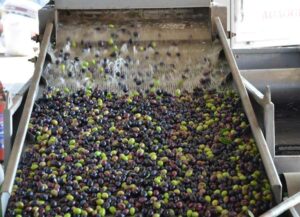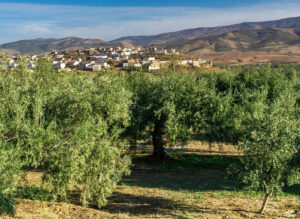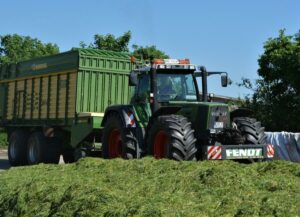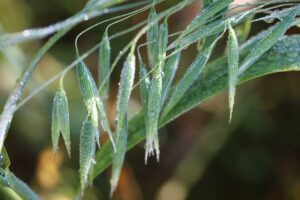Maria Villagrasa & Fernando Diaz
Tomato (Solanum lycopersicum) is the second largest vegetable crop in the world. The amount of waste it generates worldwide is estimated at 50,000 tons/year, and its disposal causes a negative impact on the environment. Tomato pomace is an industry co-product that, depending on the type of processing and the source of the raw tomatoes, includes variable proportions of skins, seeds and a small amount of pulp, representing about 4% of the original whole tomato weight.
Pomace contain valuable nutritional compounds, which include on a DM basis 59.0% fiber, 19.3% protein, 25.7% sugars, 7.6% pectin, 5.9% fat, 3.9% minerals and antioxidants (mainly lycopene).
Some trace elements and vitamins are part of the antioxidant defense system of the animal, and in the case of cows, a deficiency of any of these nutrients can depress their immunity around calving. Cows experience immunosuppression particularly during the first weeks of lactation, and as a result are highly susceptible to infectious diseases, especially mastitis and metabolic disorders.
Previous studies have shown that these antioxidant compounds, even at low or moderate concentrations in the dairy cow diet, have positive effects on production and health; they can reduce feed costs, and add value to dairy products (in terms of improving their quality and sustainability). In addition, their use can contribute to the reduction of environmental problems caused by their accumulation.
Recent research (H. Tuoxunjiang et al., 2020) assessed the effects of the partial replacement of corn silage with tomato pomace silage on feed intake, digestibility, milk production and composition, antioxidant status, and immune response in dairy cows.
Fifty pregnant Holstein cows were randomly assigned to two groups:
- Control: total mixed ration (TMR) with corn silage;
- Treatment: TMR in which 10% corn silage was replaced with tomato pomace silage (both DM basis).
The cows began to receive the diets during the dry period and the experiment continued until 14 days post calving.
The composition (DM basis) of pomace silage compared with corn silage was organic matter 91.1 vs. 93.3%; protein 16.5 vs. 8.46%; fat 12.2 vs. 3.87%, NDF 50.4 vs. 52.2%; ADF 43.2 vs. 41.1%, and starch 2.87 vs. 34.1%.
The concentration of vitamins A, E and C was significantly higher with tomato silage
Feed intake increased significantly in cows fed tomato silage (18.1 vs. 17.8 kg DM/d), which can be explained in part by the high palatability of the tomato pomace. Dry matter digestibility in the treatment group was also significantly higher.
There were no significant differences in daily milk production between both groups (24.5 kg/day). There were no differences in milk composition however, the concentrations of vitamins A, E and C were significantly higher in the treatment than in the control group (vitamin A: 2.0 vs. 0.8 IU/kg; vitamin E: 39.0 vs. 16.8 mg/kg; vitamin C: 17.5 vs. 6.7 mg/100 g). This is consistent with other experiments in which it was observed that increasing the concentration of vitamin A in the diet can lead to an increase in vitamin A in milk.
Moreover, tomato silage supplementation was found to partially alleviate the detrimental effects of the oxidative activity on dairy cows in transition. Considerable amounts of antioxidant compounds including lycopene, vitamins C, E, A and carotene have been found in tomato byproducts.
In addition, different studies have shown that concentrations of certain serum markers of oxidative stress in animals were reduced if the diet was rich in lycopene, and vitamins C and E. Intake of tomato-derived products can thus be a strategy to maintain adequate vitamin concentrations and benefit from their antioxidant properties.
Concentrations of IgA, IgM and IgG increased significantly in the treatment group at calving. This could be explained by the fact that vitamin A and E concentrations were higher when cows were fed tomato byproducts both pre- and post-calving compared to those that did not receive them. While the peripartum, the diet of the control animals covered the basic requirements of vitamin A and E, in the experimental group the corresponding values were higher during the dry and early lactation periods.
In summary, supplementing the cow’s diet with 10% tomato pomace improved DM intake and digestibility during peripartum. This can also fortify the content of vitamins A, E and C in milk, improve antioxidant status and immune response during calving, and reduce the prevalence of mastitis post-calving.
Reference
H. Tuoxunjiang, A. Yimamu, X.Q. Li, R. Maimaiti and Y.L. Wang. Effect of ensiled tomato pomace on performance and antioxidant status in the peripartum dairy cow. Journal of Animal and Feed Sciences, 29, 2020, 105–114.
© 2020 Dairy Knowledge Center. All Rights Reserved.









